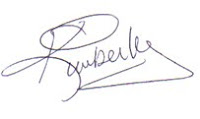As a business person, you know the fastest way for a project to "go south" is for there to be a difference in expectations between the parties involved. Even the smallest detail to one party, can be a major issue to another.
The best way to ensure a project's success is to thoroughly document everything. In the case of commissioning photography, this is achieved via signed Estimates, use of Terms and Conditions, a clear Usage/Licensing statement, Change Orders, and detailed Invoices. The more information you can provide to your photographer, including any prospective layouts the images are going to be included in or intended uses, the higher the odds your project will be a resounding success.
Your photographer is there to work with you, and wants the project to be a success as much as you do. So, if you're presented with documents and don't understand what you're looking at or reading, talk to your photographer. He or she will be happy to answer your questions and explain everything.
So, these documents are there to ensure the success of your project and are a sign you're working with a true professional.
Whether you were there or not, and whether we are your photographer on a project or not, if you have any questions or comments about commissioning architectural photography, please feel free to drop us a line anytime. We'd be happy to help!

Kimberly Blom-Roemer
Photographer
R2 Photography, LLC
r2-photography.com
866-722-9506

Kimberly Blom-Roemer
Photographer
R2 Photography, LLC
r2-photography.com
866-722-9506



